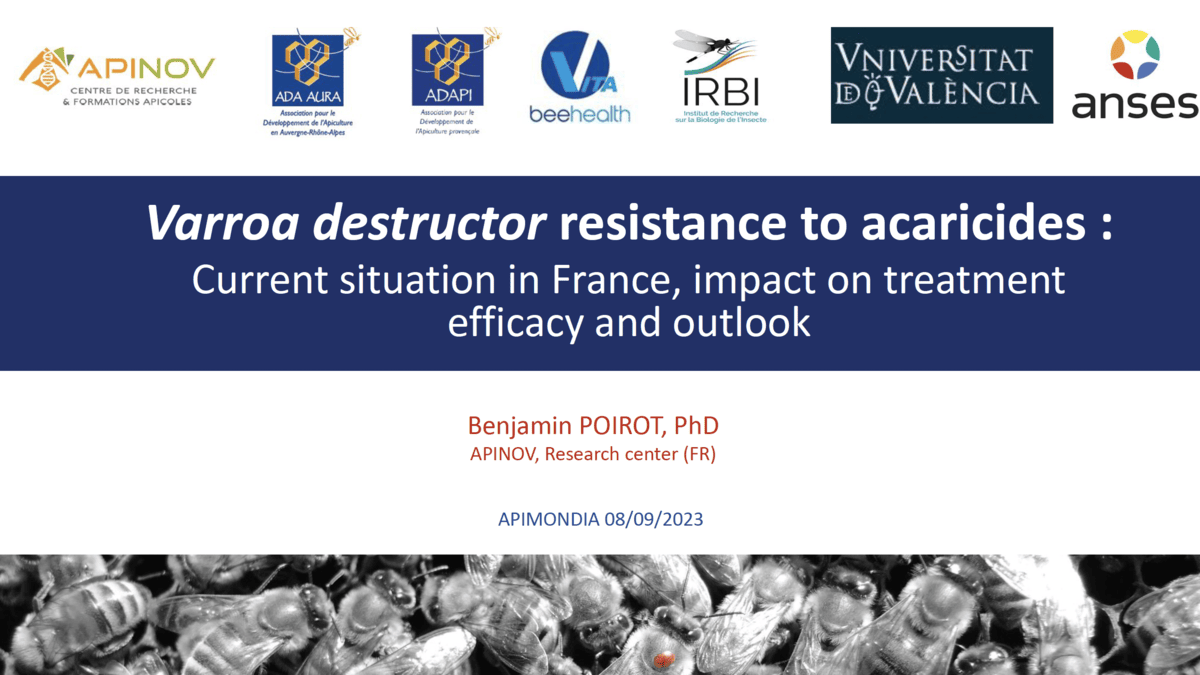Varroa destructor resistance to acaricides : Un aperçu de la situation et un focus en France par Benjamin Poirot.
Varroa destructor resistance to acaricides: An overview of the situation and a focus in France by Benjamin Poirot.
Consultez ci-dessous la présentation de la confèrence de Benjamin Poirot réalisée le 7 septembre 2023 lors du congrès international d’apiculture au Chili : Apimondia.
See below the presentation of the Benjamin Poirot Conference held on September 7, 2023 at the International Beekeeping Congress in Chile: Apimondia.
Summary :
Varroa destructor is a parasite of honeybees. It causes biological damage leading to the colony collapse in the absence of treatment. The acaricide tau-fluvalinate was widely used in the 90s until varroa developed resistances significantly reducing the effectiveness of treatments. Now, the most used conventional acaricide substance is amitraz. Unfortunately, varroa has also developed resistances. We will focus the lecture on Varroa resistance to these 2 main important acaricides: tau-fluvalinate and amitraz.
First, a phenotypic sensitivity test was developed to detect the presence of resistant mites. Using sensitive reference populations, we selected the discriminant concentration method (LC90) to determine the proportion of resistant mites in a population. In France, 45% and 66% of populations are moderately or highly resistant to tau-fluvalinate and amitraz, respectively. To investigate the mechanism of the resistance detected in V. destructor mites from French apiaries, we identified and characterized mutations. The amino acid substitutions N87S in the OctβR were associated with amitraz treatment failures. Resistance to tau-fluvalinate is associated with the presence of mutations at the position 925 of the voltage-gated sodium channel (VGSC). However, other mutations or types of resistance may also be involved to explain the survival of Varroa mites in the phenotypic test.
Then, using a model, we analyzed the impact of various parameters, including the presence of resistant varroa on the efficacy of Apivar® treatment (amitraze). A moderately resistant population will result in a loss of efficacy of 5-10% while a highly resistant population will result in an efficacy of less than 78%. Highly resistant populations observed in the field confirmed these simulated model results. We also found that initial infestation, treatment period and treatment formulation influenced the efficacy of treatment.
The management of varroa by beekeepers must now include resistance management, to limit the spread of resistant mites. In this context, we suggest that phenotypic and genotypic bioassay would be a good tool to advise the policymakers.
Plus d’information par mail ;
more information by mail at : contact(at)apinov.com

